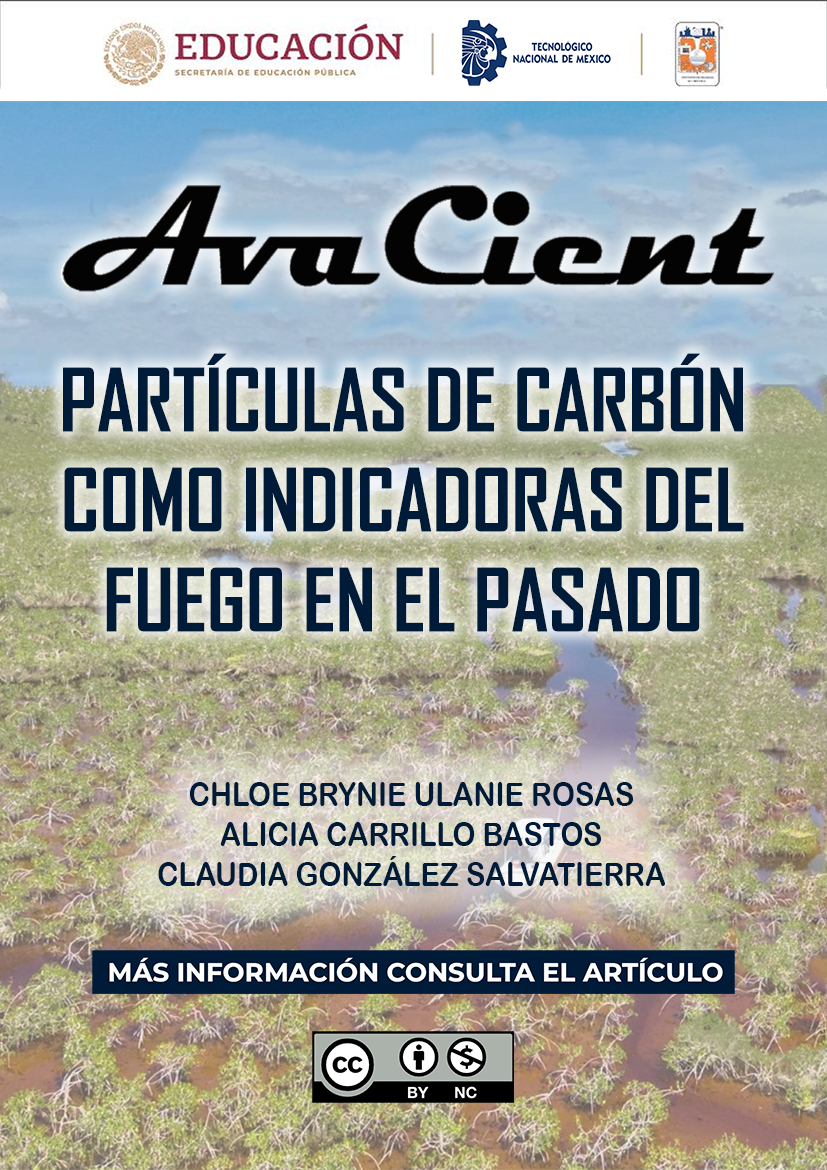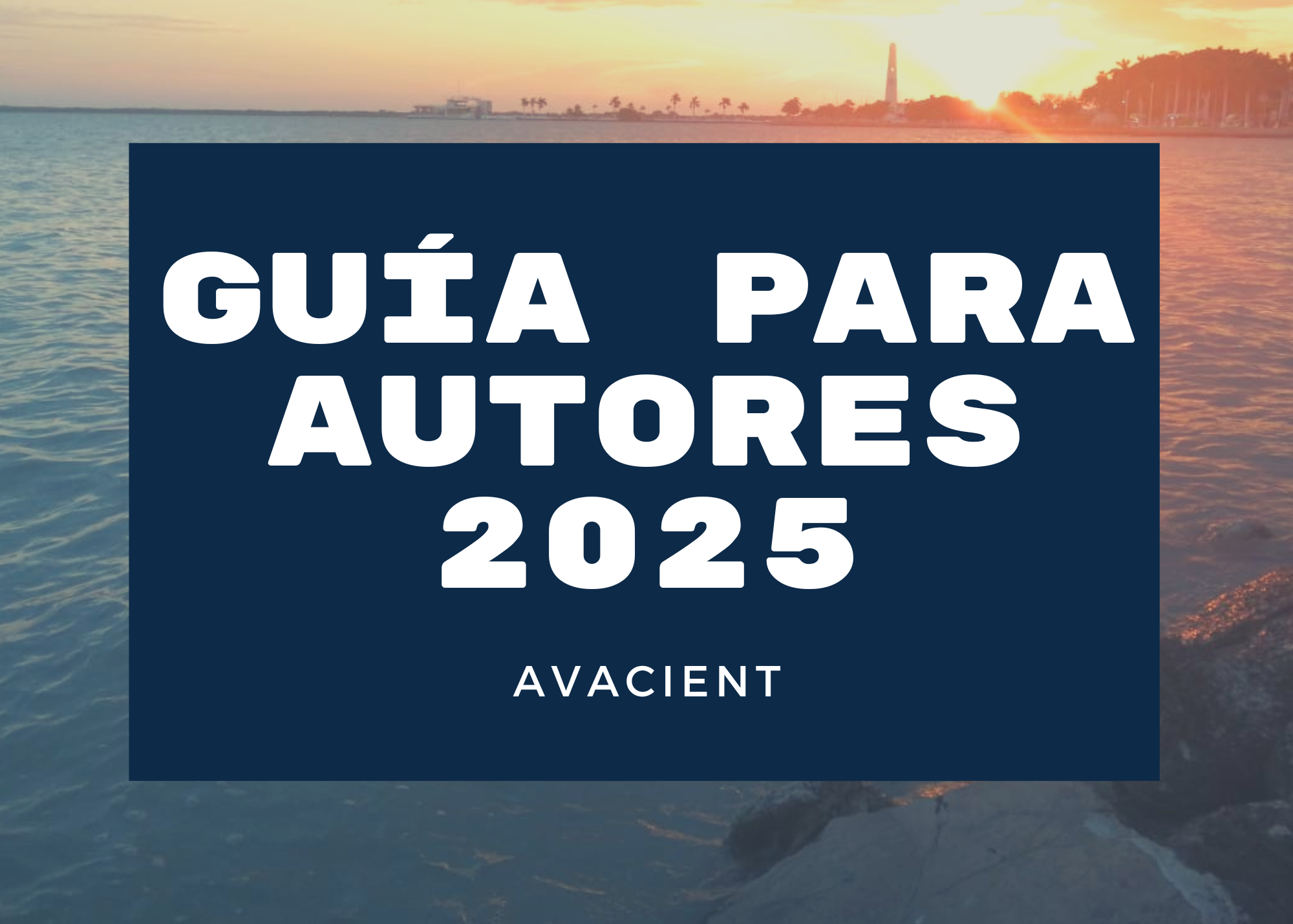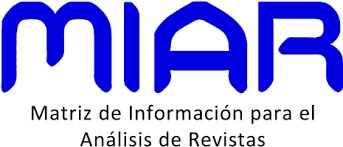CHARCOAL PARTICLES AS INDICATORS OF PAST FIRES
DOI:
https://doi.org/10.69823/avacient.v4n2a20Keywords:
Fire, ecosystems, vegetation, macrocharcoal, microcharcoal.Abstract
Fire is an important form of disturbance that influences the composition, structure, and distribution of vegetation. Additionally, fire has effects at multiple biological levels, influencing populations, communities, and ecosystems. In the last years, significant efforts have been made to understand past fire dynamics and to identify key factors that play an important role in forest fires. During a fire, charcoal particles are produced, and these contain anatomic information of species as well as chemical and physical attributes of the environment at the time of deposition. New techniques and methods have been developed to understand past fire behavior to aid in establishing better fire management practices. This paper reviews fire and charcoal particles, the latter being the most important existing proxy for reconstructing fire history at large time scales. Additionally, we briefly present case studies, particularly for the Americas and Caribbean region, that have used charcoal analysis for past fire reconstruction.
Downloads
References
Aragón-Moreno Alejandro A. Islebe GA, Torrescano-Valle N. (2012). A ~ 3800-yr, high-resolution record of vegetation and climate change on the north coast of the Yucatan Peninsula. Review of Palaeobotany and Palynology. 178:35–42. doi: 10.1016/j.revpalbo.2012.04.002.
Anchukaitis Kevin J., Sally P. Horn, (2005). A 2000-year reconstruction of forest disturbance from southern Pacific Costa Rica, Palaeogeography, Palaeoclimatology, Palaeoecology, 221(1-2), 35-54, https://doi.org/10.1016/j.palaeo.2005.02.003.
Avnery, S., Dull, R. A., & Keitt, T. H. (2011). Human versus climatic influences on late-Holocene fire regimes in southwestern Nicaragua. The Holocene, 21(4), 699-706. https://doi.org/10.1177/0959683610391314
Blarquez Olivier, Julie Talbot, Jordan Paillard, Lyna Lapointe-Elmrabti, Nicolas Pelletier, Christian Gates St-Pierre. (2018). Late Holocene influence of societies on the fire regime in southern Québec temperate forests, Quaternary Science Reviews, 180, 63-74. https://doi.org/10.1016/j.quascirev.2017.11.022.
Conedera, M., Tinner, W., Neff, C., Meurer, M., Dickens, A. F., & Krebs, P. (2009). Reconstructing past fire regimes: methods, applications, and relevance to fire management and conservation. Quaternary Science Reviews, 28(5-6), 555–576. doi:10.1016/j.quascirev.2008.11.005
Dull Robert A. (2004). An 8000-year record of vegetation, climate, and human disturbance from the Sierra de Apaneca, El Salvador. , 61(2), 159–167. doi:10.1016/j.yqres.2004.01.002
Dull, Robert A.; Nevle, Richard J.; Woods, William I.; Bird, Dennis K.; Avnery, Shiri; Denevan, William M. (2010). The Columbian Encounter and the Little Ice Age: Abrupt Land Use Change, Fire, and Greenhouse Forcing. Annals of the Association of American Geographers, 100(4), 755–771. doi:10.1080/00045608.2010.502432
Eckmeier, E., Gerlach, R., Skjemstad, J.O., Ehrmann, O., Schmidt, M.W.I., 2007a. Only small changes in soil organic carbon and charcoal found one year after experimental slash and-burn in a temperate deciduous forest. Biogeosciences 4, 377–383. doi:10.5194/bgd-4-595-2007
Enache Mihaela D. ; Brian F. Cumming (2006). Tracking recorded fires using charcoal morphology from the sedimentary sequence of Prosser Lake, British Columbia (Canada). , 65(2), 282– 292. doi:10.1016/j.yqres.2005.09.003
Faegri, K., Iversen, J. (1989). In: Faegri, K., Kaland, P.E., Krzywinski, K. (Eds.). Textbook of pollen analysis. 4th ed. John Wiley, Chichester
Feurdean, Angelica. (2021). Experimental production of charcoal morphologies to discriminate fuel source and fire type: an example from Siberian taiga. Biogeosciences. 18. 3805-3821. 10.5194/bg-18-3805-2021.
Feurdean, A., (2021). Experimental Production of Charcoal Morphologies to Discriminate Fuel Source and Fire Type in the Siberian Taiga. Biogeosciences Discussion. https:// doi.org/10.5194/bg-2021-1.
Figueroa-Rangel, B. L.; Willis, K. J.; Olvera-Vargas, M. (2012). Late-Holocene successional dynamics in a transitional forest of west-central Mexico. The Holocene, 22(2), 143–153. doi:10.1177/0959683611414929
Forbes, M.S., Raison, R.J., Skjemstad, J.O., 2006. Formation, transformation and transport of black carbon (charcoal) in terrestrial and aquatic ecosystems. Science of the Total Environment 370, 190–296. doi:10.1016/j.scitotenv.2006.06.007
Graves, B. P., Ralph, T. J., Hesse, P. P., Westaway, K. E., Kobayashi, T., Gadd, P. S., & Mazumder, D. (2019). Macrocharcoal accumulation in floodplain wetlands: Problems and prospects for reconstruction of fire regimes and environmental conditions. PLOS ONE, 14(10), e0224011. doi:10.1371/journal.pone.0224011
Graves, Bradley P.; Ralph, Timothy J.; Hesse, Paul P.; Westaway, Kira E.; Kobayashi, Tsuyoshi; Gadd, Patricia S.; Mazumder, Debashish; Regattieri, Eleonora (2019). Macro-charcoal accumulation in floodplain wetlands: Problems and prospects for reconstruction of fire regimes and environmental conditions. PLOS ONE, 14(10), e0224011–. doi:10.1371/journal.pone.0224011
Higuera Philip E.; Matthew E. Peters; Linda B. Brubaker; Daniel G. Gavin (2007). Understanding the origin and analysis of sediment-charcoal records with a simulation model., 26(13-14), 0– 1809. doi:10.1016/j.quascirev.2007.03.010
Iversen J (1941) Land occupation in Denmark’s stone age. Danm Geol Unders II 66:1–68
Jensen, K.; Lynch, E. A.; Calcote, R.; Hotchkiss, S. C. (2007). Interpretation of charcoal morphotypes in sediments from Ferry Lake, Wisconsin, USA: do different plant fuel sources produce distinctive charcoal morphotypes?. The Holocene, 17(7), 907–915. doi:10.1177/0959683607082405
Jolly, W. Matt; Cochrane, Mark A.; Freeborn, Patrick H.; Holden, Zachary A.; Brown, Timothy J.; Williamson, Grant J.; Bowman, David M. J. S. (2015). Climate-induced variations in global wildfire danger from 1979 to 2013. Nature Communications, 6(), 7537–. doi:10.1038/ncomms8537
Kelly Ryan F.; Philip E. Higuera; Carolyn M. Barrett; Feng Sheng Hu (2011). A signal-to-noise index to quantify the potential for peak detection in sediment–charcoal records. 75(1), 11–17. doi:10.1016/j.yqres.2010.07.011 TECNOLÓGICO NACIONAL DE MÉXICO ISSN 2992-8567 Año 2, Núm. 2, Vol. IV, Julio Diciembre 2024 pp. 165-171 171
Li Gang, Linlin Gao, Fengwen Liu, Menghan Qiu, Guanghui Dong, (2022). Quantitative studies on charcoalification: Physical and chemical changes of charring wood, Fundamental Research, https://doi.org/10.1016/j.fmre.2022.05.014
Marlon, J. R.; Bartlein, P. J.; Carcaillet, C.; Gavin, D. G.; Harrison, S. P.; Higuera, P. E.; Joos, F.; Power, M. J.; Prentice, I. C. (2008). Climate and human influences on global biomass burning over the past two millennia. Nature Geoscience, 1(10), 697–702. doi:10.1038/ngeo313
Marlon, J. R., Kelly, R., Daniau, A.-L., Vannière, B., Power, M. J., Bartlein, P., … Zhihai, T. (2016). Reconstructions of biomass burning from sediment-charcoal records to improve data–model comparisons. Biogeosciences, 13(11), 3225–3244. doi:10.5194/bg-13-3225-2016
McLauchlan, K. K., Higuera, P. E., Miesel, J., Rogers, B. M., Schweitzer, J., Shuman, J. K., … Watts, A. C. (2020). Fire as a fundamental ecological process: research advances and frontiers. Journal of Ecology. doi:10.1111/1365-2745.13403
Mooney SD, Tinner W. (2011). The analysis of charcoal in peat and organic sediments. International Mire Conservation Group and International Peat Scociety. 7(9). ISSN 1819-745X Mustaphi, C. J. C.; Pisaric, M. F. J. (2014). A classification for macroscopic charcoal morphologies found in Holocene lacustrine sediments. Progress in Physical Geography, 38(6), 734–754. doi:10.1177/0309133314548886
Pausas, J. G., & Keeley, J. E. (2021). Wildfires and global change. Frontiers in Ecology and the Environment, 19(7), 387–395. doi:10.1002/fee.2359 Patterson, W. A., Edwards, K. J., & Maguire, D. J. (1987). Microscopic charcoal as a fossil indicator of fire. Quaternary Science Reviews, 6(1), 3–23. doi:10.1016/0277-3791(87)90012-6
Power MJ, Bush M, Behling H, Horn S, Mayle F, Urrego D. (2010). Paleofire activity in tropical America during the last 21 ka: A regional synthesis based on sedimentary charcoal. PAGES news. 18(2):73–75. doi:10.22498/pages.18.2.73.
Rushton EA, Metcalfe SE, Whitney BS. (2012). A late-Holocene vegetation history from the Maya lowlands, Lamanai, Northern Belize. The Holocene. 23(4):485–493. doi:10.1177/0959683612465449.
Schüpbach S, Kirchgeorg T, Colombaroli D, Beffa G, Radaelli M, Kehrwald NM, Barbante C. (2015). Combining charcoal sediment and molecular markers to infer a Holocene fire history in the Maya Lowlands of Petén, Guatemala. Quaternary Science Reviews. 115:123–131. doi: 10.1016/j.quascirev.2015.03.004.
Scott, A. . (2000). The Pre-Quaternary history of fire. Palaeogeography, Palaeoclimatology, Palaeoecology, 164(1-4), 281–329. doi:10.1016/s0031-0182(00)00192-9
Scott, A. (2010). Charcoal recognition, taphonomy and uses in palaeoenvironmental analysis. Palaeogeography, Palaeoclimatology, Palaeoecology, 291(1-2), 11–39. doi:10.1016/j.palaeo.2009.12.012
Torres-Rodríguez Esperanza, Blanca L. Figueroa-Rangel, Socorro Lozano-García, Beatriz Ortega-Guerrero, Margarita Caballero-Miranda, Alonso Herrejon-Serrano. (2022). Charcoal morphotypes and potential fuel types from a Mexican lake during MIS 5a and MIS 3, Journal of South American Earth Sciences, 115. https://doi.org/10.1016/j.jsames.2022.103724.
Umbanhowar Jr., C.E.; McGrath, M.J. (1998). Experimental production and analysis of microscopic charcoal from wood, leaves and grasses. The Holocene, 8(3), 341–346. doi:10.1191/095968398666496051
Whitlock C, Larsen C. Charcoal as a Fire Proxy.(2001). In: Smol JP, Birks HJB, Last WM, Bradley RS, Alverson K, editors. Tracking Environmental Change Using Lake Sediments: Terrestrial, Algal, and Siliceous Indicators. Dordrecht: Springer Netherlands; p. 75–97.
Wu J, Porinchu DF. (2019). A high-resolution sedimentary charcoal- and geochemistry-based reconstruction of late Holocene fire regimes in the páramo of Chirripό National Park, Costa Rica. Quat res. 93:314–329. doi:10.1017/qua.2019.64.
Wu Chao, Sergey Venevsky, Stephen Sitch, Lina M. Mercado, Chris Huntingford, A. Carla Staver. (2021). Historical and future global burned area with changing climate and human demography. One Earth, 4(4), 517-530. https://doi.org/10.1016/j.oneear.2021.03.002.

Downloads
Published
How to Cite
Issue
Section
License
Copyright (c) 2024 AvaCient

This work is licensed under a Creative Commons Attribution-NonCommercial 4.0 International License.











